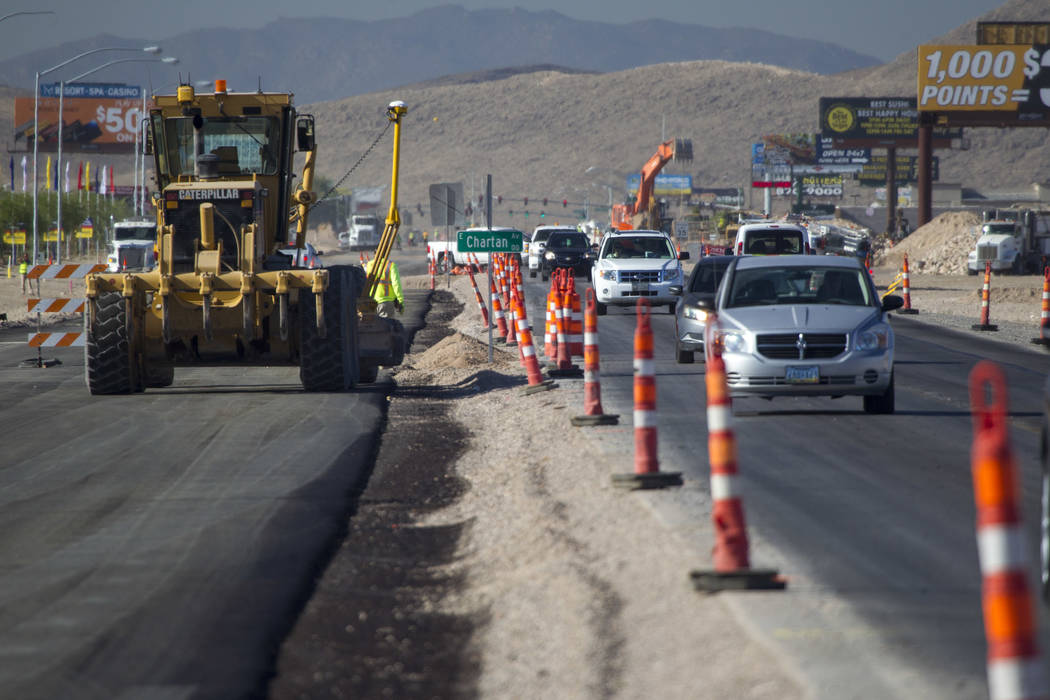EDITORIAL: More Las Vegas highway features that most Southern Nevadans can’t use
Like a fussy great aunt scolding her family for touching the decorative bathroom hand towels, state transportation officials insist that the vast majority of Southern Nevada commuters steer clear of their new network of high-occupancy vehicle lanes.
On Monday, the Nevada Department of Transportation opened a series of improvements in and near the Spaghetti Bowl as part of the billion-dollar Project Neon. But thousands of drivers — whose taxes paid for the roadwork — will be prevented from accessing many of its features thanks to restrictions imposed to encourage carpooling.
In addition, HOV constraints — at least two passengers per vehicle — will now be enforced year-round 24/7 rather than only during weekday commuting hours.
NDOT officials insist the restrictions reduce emissions by removing vehicles from general purpose lanes. Yet many researchers have concluded the opposite: HOV lanes exacerbate congestion by decreasing freeway access. Regardless, NDOT officials offer little evidence that HOV lanes here have increased traffic flow. Like central planners across the country, they seem intent on wasting highway capacity in service to social engineering and environmental virtue signaling.
NDOT opened the first HOV stretch — six miles along U.S. Highway 95 — in 2007. That was expanded to 12 miles in 2012. The agency also spent millions building an HOV flyover between U.S. 95 and Summerlin Parkway. Yet transportation planners have minimal data on how many Southern Nevada drivers carpool. “We don’t necessarily have a percentile,” Tony Illia, NDOT’s public information officer, said this week. Translation: Agency officials remain blind as to whether existing HOV lanes — in place for more than a decade — have, in fact, “changed driver behavior,” as Mr. Illia described the department’s goal.
In addition, while NDOT has vehicle counts for car-pool lanes, it does not monitor traffic to determine who is actually driving in the restricted lanes. Even a cursory survey of vehicles clipping past congestion in the general use lanes during rush hour would reveal myriad lone drivers flouting the law. “We don’t do enforcement,” Mr. Illia noted. Fair enough, but wouldn’t such information be helpful in assessing the value of local HOV lanes?
NDOT officials believe the new HOV features of Project Neon — which complete an uninterrupted 22-mile stretch of restricted freeway — will encourage more commuters to pair up. But there’s scant evidence for that contention.
Members of the Las Vegas City Council this month pushed back on the HOV restrictions and 24/7 enforcement. Good. Rather than throwing millions in taxpayer cash away on green fantasies involving carpooling, NDOT should focus on moving traffic efficiently. If the agency refuses to open all lanes and flyovers to all drivers, local elected officials should intervene.

















